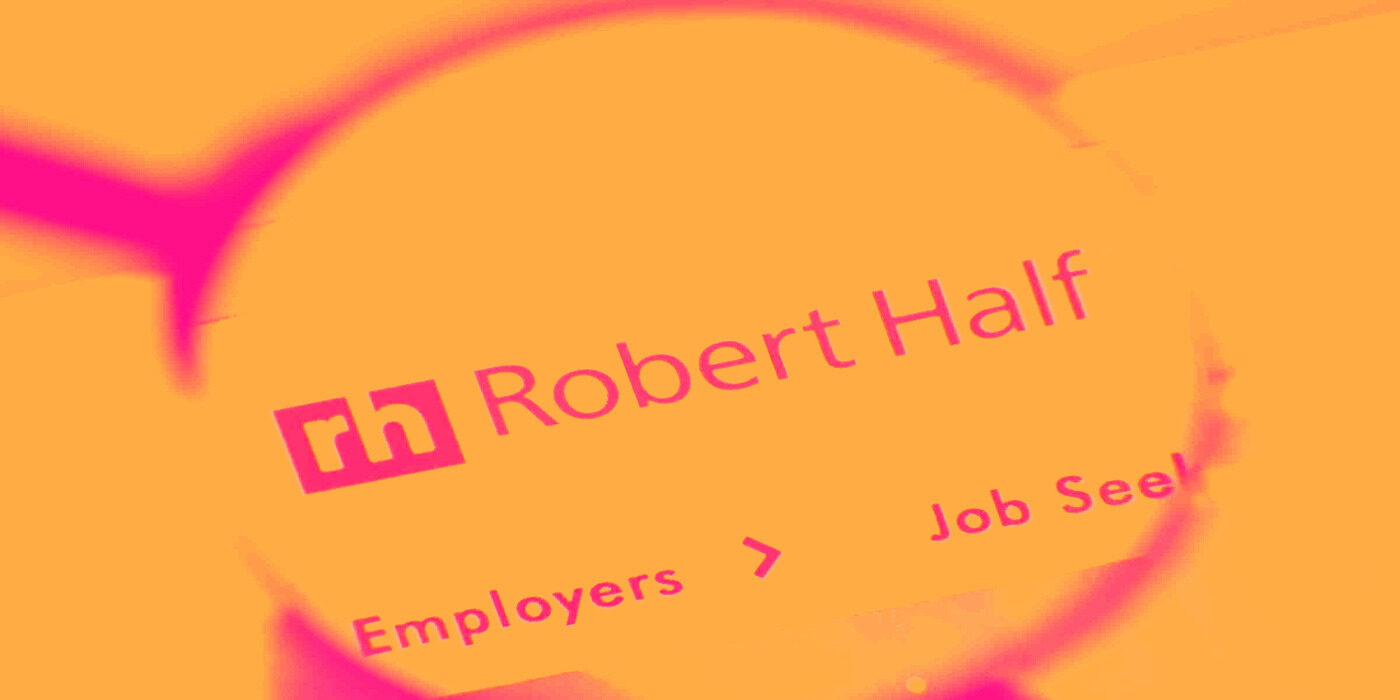
Specialized talent solutions company Robert Half (NYSE: RHI) reported Q2 CY2025 results topping the market’s revenue expectations, but sales fell by 7% year on year to $1.37 billion. Its GAAP profit of $0.41 per share was in line with analysts’ consensus estimates.
Is now the time to buy Robert Half? Find out by accessing our full research report, it’s free.
Robert Half (RHI) Q2 CY2025 Highlights:
- Revenue: $1.37 billion vs analyst estimates of $1.35 billion (7% year-on-year decline, 1.1% beat)
- EPS (GAAP): $0.41 vs analyst estimates of $0.40 (in line)
- Operating Margin: 0.1%, down from 5.1% in the same quarter last year
- Market Capitalization: $4.28 billion
Company Overview
With roots dating back to 1948 as the first specialized recruiting firm for accounting and finance professionals, Robert Half (NYSE: RHI) provides specialized talent solutions and business consulting services, connecting skilled professionals with companies across various fields.
Revenue Growth
Reviewing a company’s long-term sales performance reveals insights into its quality. Any business can have short-term success, but a top-tier one grows for years.
With $5.57 billion in revenue over the past 12 months, Robert Half is one of the larger companies in the business services industry and benefits from a well-known brand that influences purchasing decisions. However, its scale is a double-edged sword because it’s harder to find incremental growth when you’ve penetrated most of the market. To accelerate sales, Robert Half likely needs to optimize its pricing or lean into new offerings and international expansion.
As you can see below, Robert Half struggled to increase demand as its $5.57 billion of sales for the trailing 12 months was close to its revenue five years ago. This shows demand was soft, a rough starting point for our analysis.
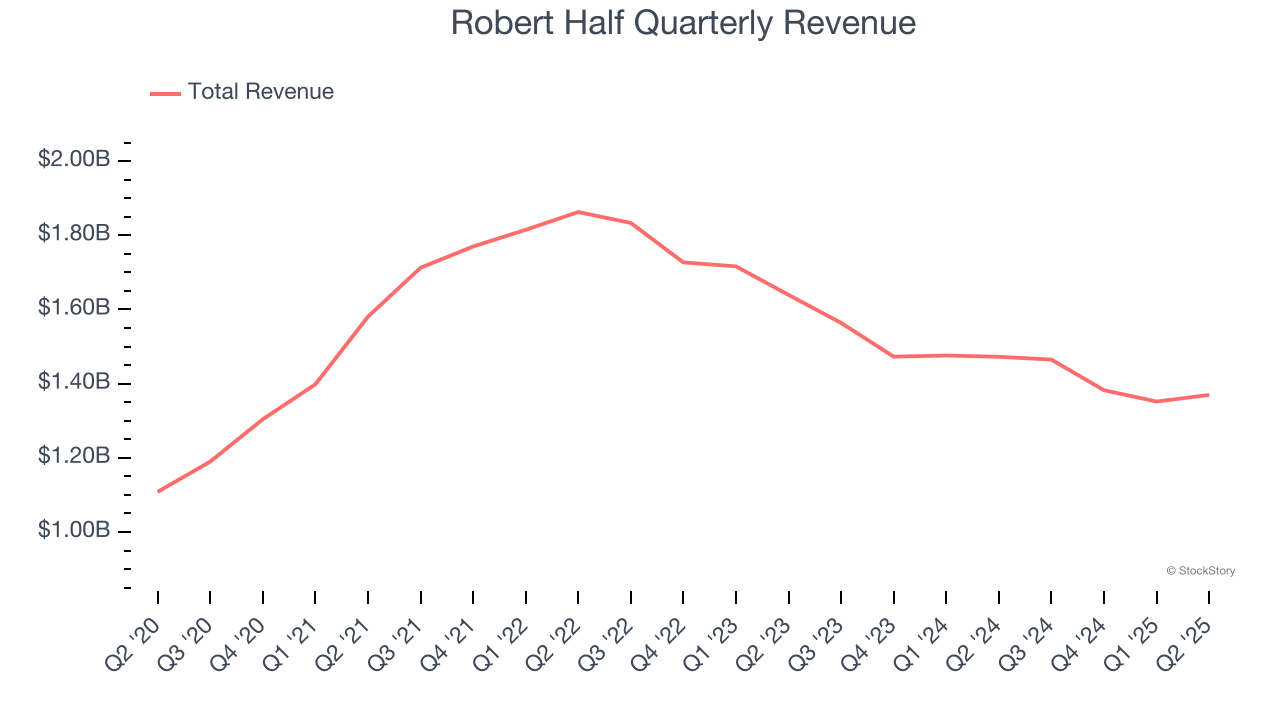
We at StockStory place the most emphasis on long-term growth, but within business services, a half-decade historical view may miss recent innovations or disruptive industry trends. Robert Half’s recent performance shows its demand remained suppressed as its revenue has declined by 10.3% annually over the last two years. 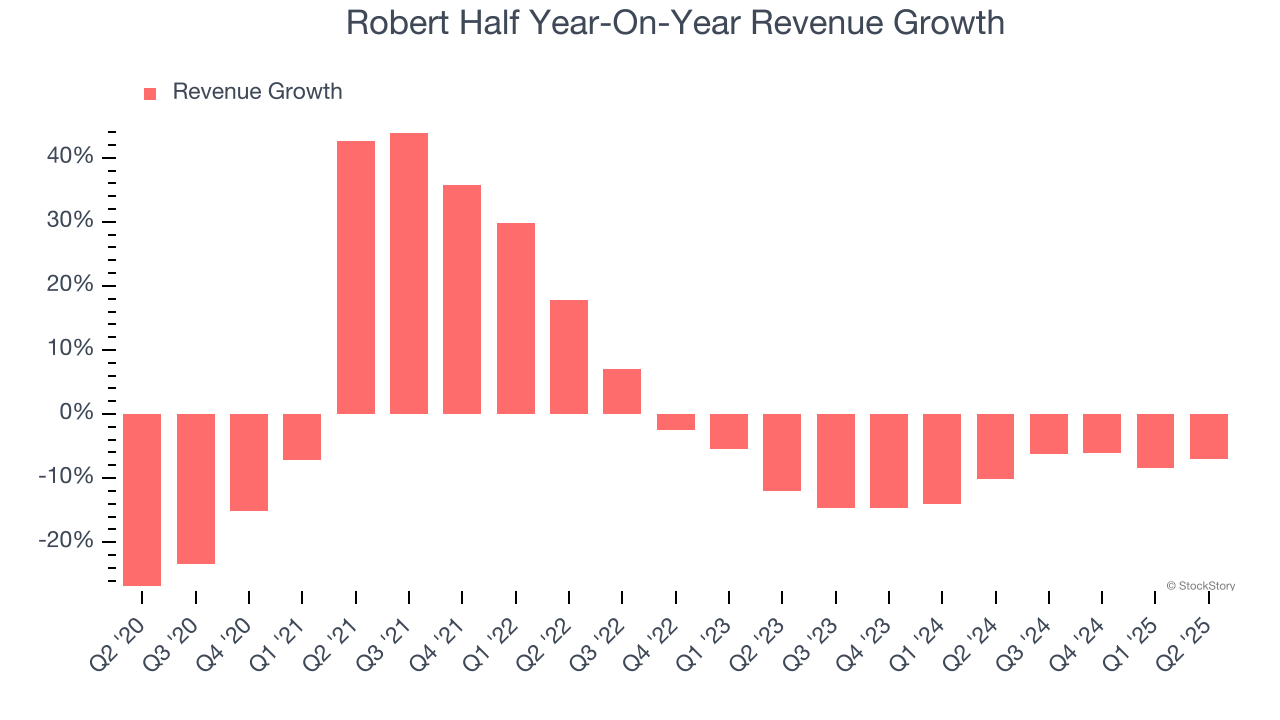
This quarter, Robert Half’s revenue fell by 7% year on year to $1.37 billion but beat Wall Street’s estimates by 1.1%.
Looking ahead, sell-side analysts expect revenue to remain flat over the next 12 months. While this projection suggests its newer products and services will spur better top-line performance, it is still below average for the sector.
Unless you’ve been living under a rock, it should be obvious by now that generative AI is going to have a huge impact on how large corporations do business. While Nvidia and AMD are trading close to all-time highs, we prefer a lesser-known (but still profitable) stock benefiting from the rise of AI. Click here to access our free report one of our favorites growth stories.
Operating Margin
Robert Half was profitable over the last five years but held back by its large cost base. Its average operating margin of 8.5% was weak for a business services business.
Analyzing the trend in its profitability, Robert Half’s operating margin decreased by 5.5 percentage points over the last five years. Robert Half’s performance was poor no matter how you look at it - it shows that costs were rising and it couldn’t pass them onto its customers.
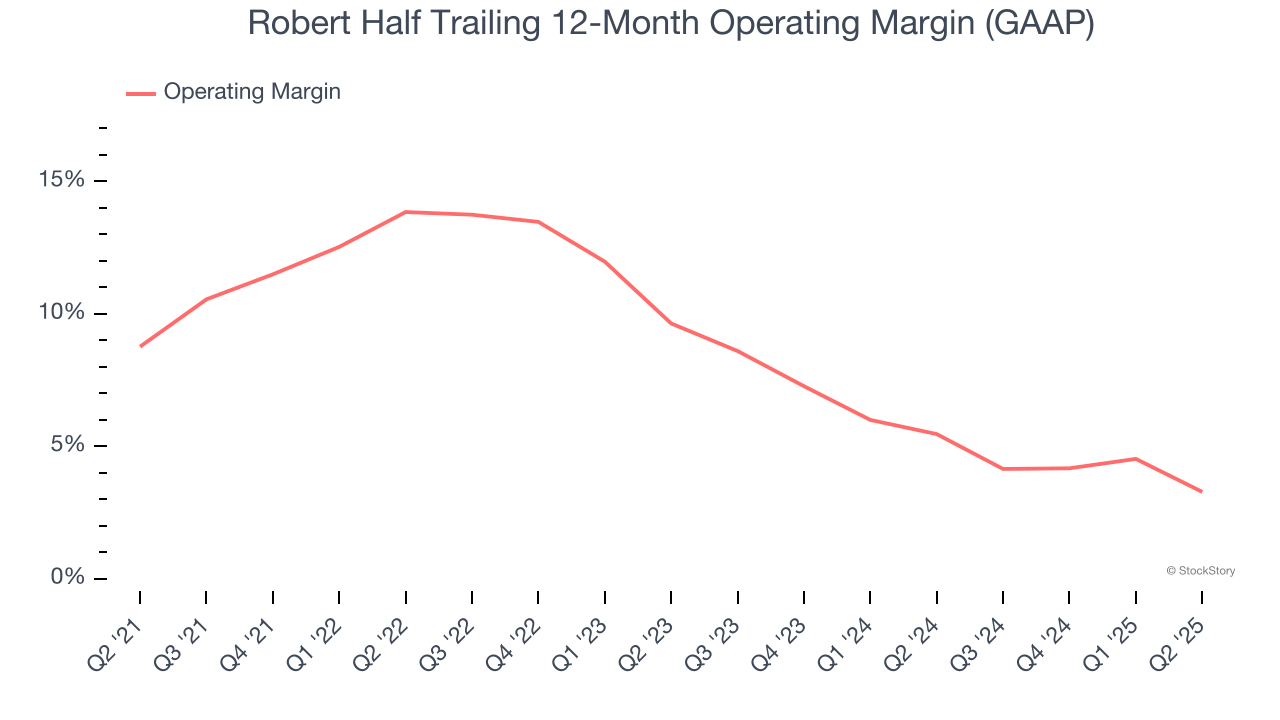
This quarter, Robert Half’s breakeven margin was down 5 percentage points year on year. This contraction shows it was less efficient because its expenses increased relative to its revenue.
Earnings Per Share
Revenue trends explain a company’s historical growth, but the long-term change in earnings per share (EPS) points to the profitability of that growth – for example, a company could inflate its sales through excessive spending on advertising and promotions.
Sadly for Robert Half, its EPS declined by 11.3% annually over the last five years while its revenue was flat. This tells us the company struggled because its fixed cost base made it difficult to adjust to choppy demand.
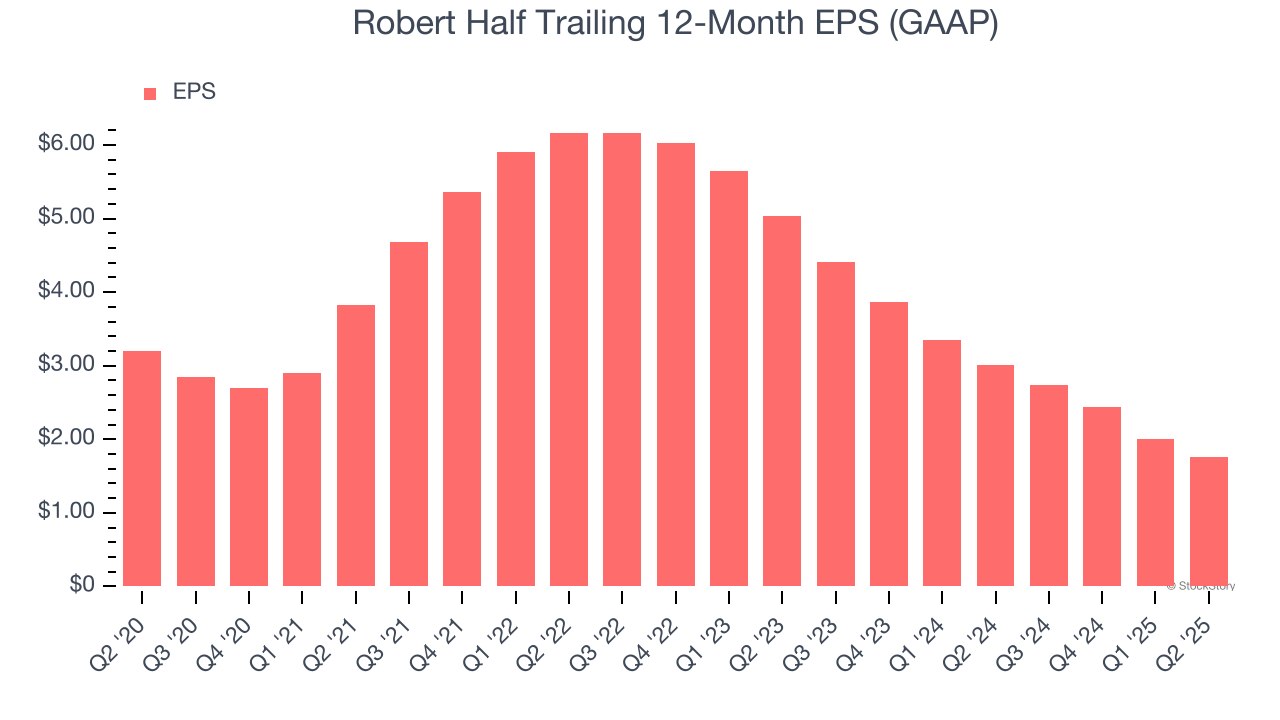
We can take a deeper look into Robert Half’s earnings to better understand the drivers of its performance. As we mentioned earlier, Robert Half’s operating margin declined by 5.5 percentage points over the last five years. This was the most relevant factor (aside from the revenue impact) behind its lower earnings; interest expenses and taxes can also affect EPS but don’t tell us as much about a company’s fundamentals.
Like with revenue, we analyze EPS over a more recent period because it can provide insight into an emerging theme or development for the business.
Robert Half’s two-year annual EPS declines of 41% were bad and lower than its two-year revenue performance.
In Q2, Robert Half reported EPS at $0.41, down from $0.66 in the same quarter last year. Despite falling year on year, this print beat analysts’ estimates by 1.6%. Over the next 12 months, Wall Street expects Robert Half’s full-year EPS of $1.75 to grow 22.2%.
Key Takeaways from Robert Half’s Q2 Results
It was good to see Robert Half narrowly top analysts’ revenue expectations this quarter. Overall, this print had some key positives. The market seemed to be hoping for more, and the stock traded down 1.6% to $41.75 immediately following the results.
Is Robert Half an attractive investment opportunity at the current price? The latest quarter does matter, but not nearly as much as longer-term fundamentals and valuation, when deciding if the stock is a buy. We cover that in our actionable full research report which you can read here, it’s free.





